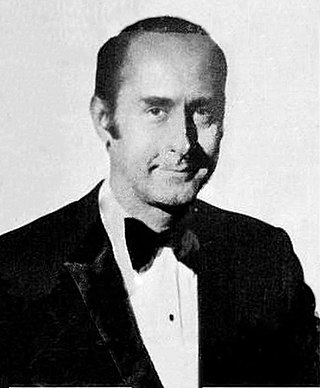
Henry Mancini was an American composer, conductor, arranger, pianist and flutist. Often cited as one of the greatest composers in the history of film, he won four Academy Awards, a Golden Globe, and twenty Grammy Awards, plus a posthumous Grammy Lifetime Achievement Award in 1995.
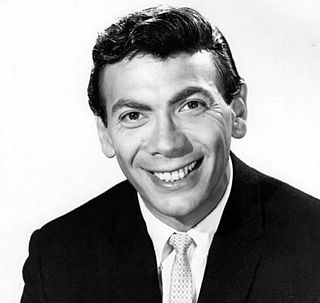
Edmund Dantes Urick, known professionally as Ed Ames or Eddie Ames, was an American pop singer and actor. He was known for playing Mingo in the television series Daniel Boone, and for his Easy Listening number #1 hits of the mid-to-late 1960s including "My Cup Runneth Over", "Time, Time", and "When the Snow Is on the Roses". He was also part of the popular 1950s singing group with his siblings, the Ames Brothers.

Michael Jay Feinstein is an American singer, pianist and music revivalist. He is an archivist and interpreter for the repertoire known as the Great American Songbook. In 1988 he won a Drama Desk Special Award for celebrating American musical theatre songs. Feinstein is also a multi-platinum-selling, five-time Grammy-nominated recording artist. He is the artistic director for The Center for the Performing Arts in Carmel, Indiana.
Melissa Errico is an American actress, singer, recording artist and writer. She is known for her Broadway musical roles such as Eliza Doolittle in My Fair Lady and the title role in One Touch of Venus, as well as her recordings of musical theater classics, including albums of songs by Stephen Sondheim and Michel Legrand. In recent years she has become a contributing writer to The New York Times and served on the National Endowment for the Arts.

Roslyn Kind is an American actress and singer-songwriter. She is the maternal half-sister of Barbra Streisand. She has been performing on Broadway and other venues since her teenage years.
"You're Gonna Hear from Me" is a song written by André Previn and Dory Previn written for the 1965 movie Inside Daisy Clover and performed, among others, by Andy Williams. The song reached No. 13 on the adult contemporary chart in 1966.

Lana Eleanor Cantrell AM is an Australian-American singer and entertainment lawyer. She was nominated for the Grammy Award for Best New Artist in the Grammy Awards of 1968.
Portia Nelson was an American popular singer, songwriter, actress, and author. She was best known for her appearances in 1950s cabarets, where she sang soprano.

54 Below is a nonprofit cabaret and restaurant in the basement of Studio 54 in Midtown Manhattan, New York City. Run by Broadway producers Steve Baruch, Richard Frankel, Marc Routh and Tom Viertel, 54 Below has hosted shows by such performers as Patti LuPone, Ben Vereen, Sierra Boggess, Peggy King, Lea Salonga, Marilyn Maye, Luann de Lesseps and Barbara Cook.
Billy Stritch is an American composer, arranger, vocalist, and jazz pianist. For many years, he was best known as a confidant, music director, and piano player for Liza Minnelli.
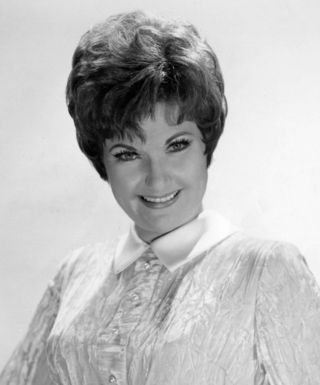
The discography of American singer Marilyn Maye contains 13 studio albums, two compilation albums, two live albums, 13 lead artist singles, two promotional singles and four additional album appearances. Her debut studio album appeared in 1961 called Marilyn...the Most. Signing with RCA Victor, her second studio album was released in 1965 titled Meet Marvelous Marilyn Maye. It was followed in 1966 by the live album, The Second of Maye, and a studio album, The Lamp Is Low.

Meet Marvelous Marilyn Maye is a studio album by American singer Marilyn Maye. It was released in August 1965 via RCA Victor and contained 12 tracks. It was the second album of Maye's career and her first with the RCA label. It contained songs from musicals and also featured covers of jazz vocal standards. It was reviewed positively by Billboard magazine following its release in 1965.

The Second of Maye is a live album by American singer Marilyn Maye. It was released in April 1966 via RCA Victor and it contained 12 tracks. The project was recorded in a live format at The Living Room, a performance venue located in New York City. It was the second album of Marilyn Maye's issued by the RCA Victor label and her first live album. It was met with favorable reviews following its release.

The Lamp Is Low is a studio album by American singer Marilyn Maye. It was released in October 1966 via RCA Victor and contained 12 tracks. The album was a mixture of both original material and cover songs. Of its cover songs were recordings from 1960s films and jazz standards. Among its Jazz tracks was the album's title track. It received positive reviews from Billboard and Cashbox magazines. The album has been considered a "classic" disc since its original release.
"Sherry!" is a song composed by James Lipton and Laurence Rosenthal. It was first recorded in 1966 by American singer Marilyn Maye whose version was released as a single by RCA Victor. It later appeared in the Broadway musical also titled Sherry!. The show premiered in 1967, however, it was never recorded until 2004. "Sherry!" was then recorded for the cast album by American television actress Carol Burnett.

A Taste of "Sherry!" is a studio album by American singer Marilyn Maye. It was released in February 1967 by RCA Victor and contained 12 tracks. The album featured Maye's first commercially successful singles: "Cabaret" and "Sherry". Both were featured in Broadway musicals of the same names and both reached the top ten on the American adult contemporary chart. A Taste of "Sherry!" received positive reviews from several publications following its release.
"Step to the Rear" is a song written by Elmer Bernstein and Carolyn Leigh. It was originally performed in the Broadway musical How Now, Dow Jones between 1967 and 1968. It was first recorded on an official cast album in 1968. It was notably recorded by American singer Marilyn Maye, whose version was released as a single. Maye's version reached the top five of the American adult contemporary chart and was seen on televised advertisements for Lincoln and Mercury cars. It was adapted into the University of South Carolina’s fight song as The Fighting Gamecocks Lead the Way.
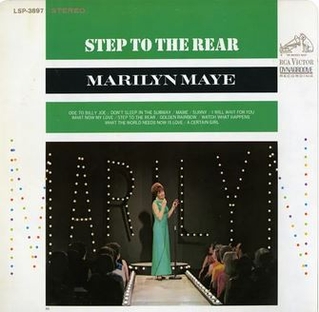
Step to the Rear is a studio album by American singer Marilyn Maye. It was released in November 1967 via RCA Victor and contained 11 tracks. Its title song was taken from the Broadway musical How Now Dow Jones and was a single for Maye in 1967. It reached the top five of American adult contemporary chart. The album itself received a positive review from Billboard magazine following its release.

The Happiest Sound in Town is a studio album by American singer Marilyn Maye. It was released in September 1968 via RCA Victor and contained 11 tracks. It was the sixth studio album of Maye's career featuring songs that were categorized as easy listening material. It featured cover of popular recordings along with new material.
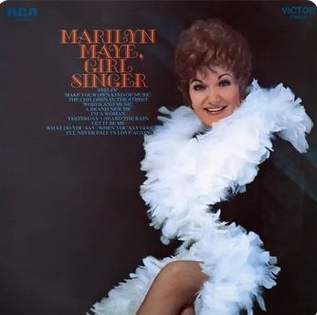
Marilyn Maye, Girl Singer is a studio album by American singer Marilyn Maye. It was released in April 1970 via RCA Victor and was the seventh studio album of her career. It was also her final album released by RCA Victor. Girl Singer contained a total of 11 tracks. Two tracks were originally singles. The 1968 single "Feelin'" became a top 20 song on the American adult contemporary chart. Girl Singer was given a positive review from Record World magazine following its release.















